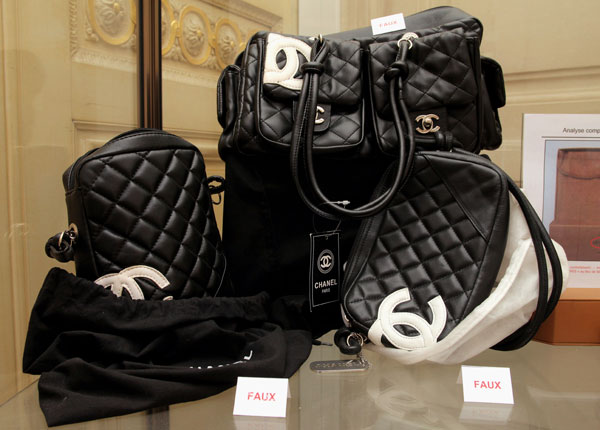Knockoffs and Counterfeits: What's the Difference?

Photo: Getty Images
Don't let the interlocking Cs fool you: counterfeit Chanel handbags
Target’s PS1-inspired bag caused controversy recently when Proenza Schouler designers Jack McCollough and Lazaro Hernandez told the New York Times they were disappointed in their former collaborator. (The design duo created a capsule collection for Target as part of the retailer’s Go International program.) But no matter how disappointed they are, there’s not much they can do about it: Target’s knockoff wasn’t a counterfeit and was therefore perfectly legal.
NBC’s Thread NY spoke to Susan Scafidi, an intellectual property expert and the founder of the new Fashion Law Institute at Fordham University, about the difference between counterfeits and knockoffs, and what can be done to protect designers.
“Counterfeits are unauthorized, close copies of labels, logos, or other distinctive markings—like that ‘Prado’ bag or ‘Vuiton’ scarf for sale on Canal Street, or red-soled Loubie look-alikes available online,” explained Scafidi. “These are illegal, and manufacturing or selling them can mean having to pay damages to the trademark owner or even criminal sanctions.
“Most fashion designs, however, are legally vulnerable to copying that doesn't include the label or other types of designer signature, at least in the U.S.”
Congress came close to passing the Innovative Design Protection and Piracy Prevention Act last year, which would provide a three-year period of protection against designs that are “substantially identical” to originals.
“Having even this little bit of intellectual property protection will change the game for emerging designers, since they can't just rely on consumer recognition of their trademarks. Established companies with recognizable logos have an uphill battle against the many counterfeiters out there, but at least they have the law on their side,” said Scafidi.
“The work of indie designers is often copied without the label or logo, which leaves them with no legal protection at all—and design pirates know this. Once a new law is in place, copyists will have to think twice before making near-exact replicas from the runway.”
Without such a law, however, Scafidi says designer knockoffs are tough to fight.
“Jack McCollough and Lazaro Hernandez could try to claim that the PS1 is so recognizable that the design itself is like a trademark, making consumers think that the look-alikes are actually Proenza Schouler bags,” she said. “Convincing a court to recognize this kind of ‘trade dress’ protection isn't easy, legally speaking, but it has been successful for truly iconic designs like the Hermès Birkin.”
Get the full story from NBC Thread NY.
And see who else recently had success fighting off counterfeiters.















